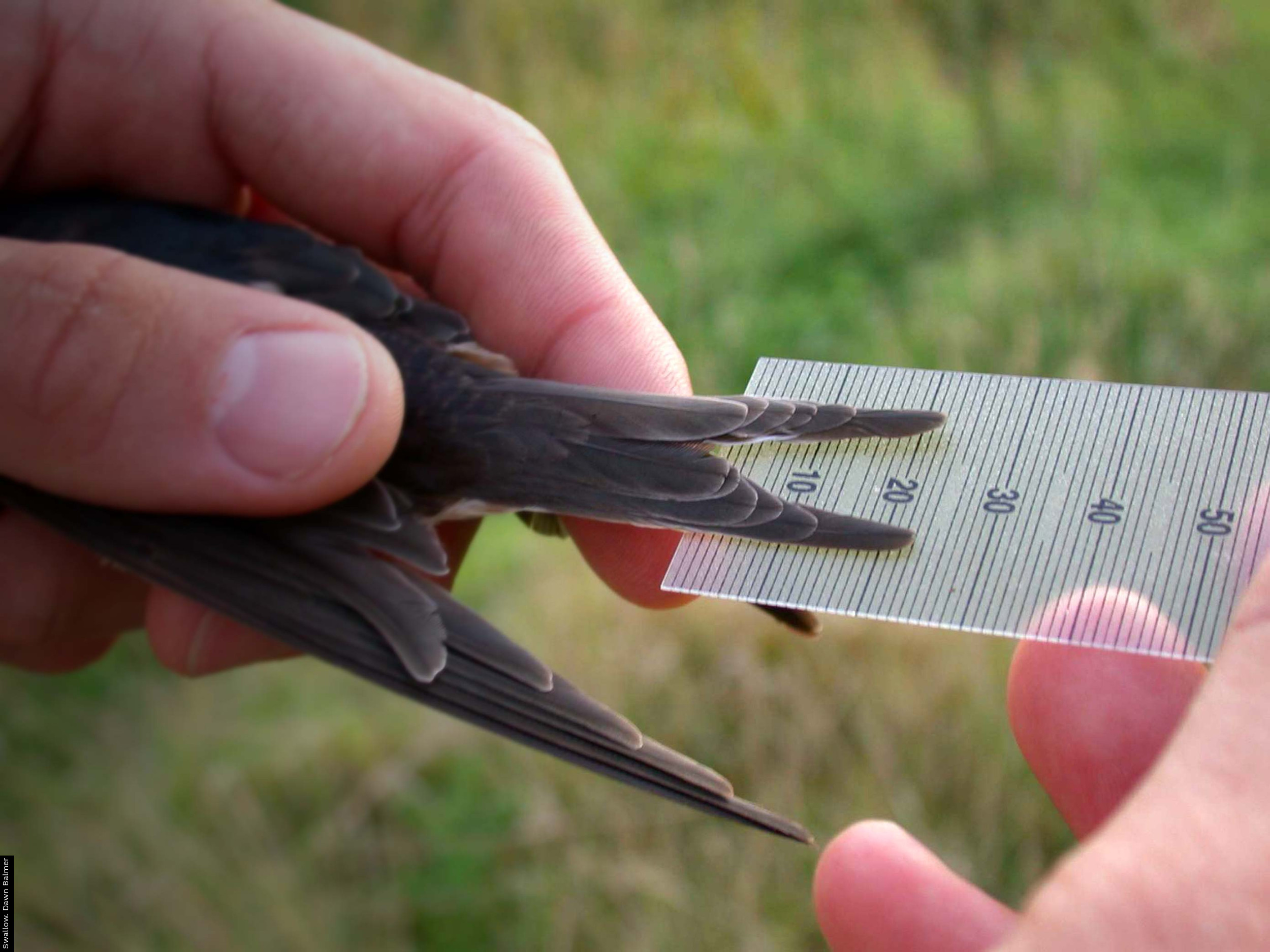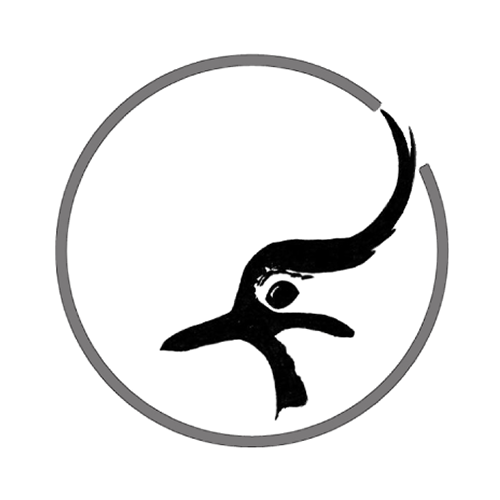|
Species
|
Measurement
|
Criteria for
|
|
Arctic Skua
|
Tail difference; Wing length + Weight
|
Age1; Sex (ad.)2
|
|
Arctic Tern
|
Total head length
|
Sex (ad.)2
|
|
Bar-tailed Godwit
|
Bill length (F)
|
Sex1,2
|
|
Bewick’s Swan
|
Toe length
|
Sex (ad.)1
|
|
Bittern
|
Wing length + Bill length (F)
|
Sex1,2
|
|
Black-headed Gull
|
Total head length + Bill depth (G)
|
Sex1,2
|
|
Black-tailed Godwit
|
Wing length + Bill length (F)
|
Sex, Race1,2
|
|
Buzzard
|
Tarsus width (lateral point) + Hind claw length
|
Sex (pul. >26 days)1,2
|
|
Chough
|
Wing length + Weight
|
Sex (ad.)2
|
|
Common Gull
|
Total head length
|
Sex1,2
|
|
Common Sandpiper
|
Total head length
|
Sex1
|
|
Common Tern
|
Total head length + Weight
|
Sex (ad.)1,2
|
|
Coot
|
Tarsus length (min.)
|
Sex (ad.)1,2
|
|
Cormorant
|
Bill depth (min.); Gular pouch angle
|
Sex1,2; Race1,2
|
|
Curlew
|
Bill length (F) + Tarsus length (min.)
|
Sex1,2
|
|
Curlew Sandpiper
|
Bill length (F)
|
Sex1,2
|
|
Dunlin
|
Bill length (F) + Tarsus length (min.)
|
Race1,2
|
|
Fulmar
|
Bill length (feathers at base of culmen to tip); Bill depth (gonys)
|
Sex1,2
|
|
Golden Eagle
|
Culmen length + Hind claw length
|
Sex1,2
|
|
Goshawk
|
Tarsus length (min.)
|
Sex1,2
|
|
Great Black-back Gull
|
Total head length; Bill length (F) + Bill depth (gonys)
|
Sex (ad.)1,2
|
|
Great Crested Grebe
|
Bill length (gape to tip) + Bill depth (proximate point of nostril)
|
Sex1,2
|
|
Great Skua
|
Total head length + Tarsus (min.)
|
Sex (ad.)2
|
|
Great Spotted Woodpecker
|
Bill length (S) + Bill Depth (N)
|
Race5
|
|
Grey Heron
|
Bill length (F)
|
Sex (ad.)1,2
|
|
Hen Harrier
|
Bill length (C)
|
Sex (imm.)2
|
|
Herring Gull
|
Total head length; Bill length (F) + Bill depth (gonys)
|
Sex (ad. argenteus only)1, 2
|
|
Jackdaw
|
Wing length + Tarsus length (min.)
|
Sex (ad.)2
|
|
Kittiwake
|
Total head length
|
Sex1,2
|
|
Lapwing
|
Crest length
|
Sex (ad.)1,2
|
|
Lesser Black-back Gull
|
Total head length; Bill length (F) + Bill depth (gonys)
|
Sex (ad. graellsii only)1, 2
|
|
Little Egret
|
Wing length + Bill length (F) + Tarsus length (min.); Nape feather length
|
Sex2; Age1,2
|
|
Little Stint
|
Bill length (F)
|
Sex1
|
|
Manx Shearwater
|
Bill length (F) + Tarsus length (min.)
|
Sex2
|
|
Marsh Harrier
|
Toe span; Bill length(C) + Weight
|
Sex (pul.)1; Sex (imm.)1,2
|
|
Marsh/Reed Warbler
|
Wing formula
|
Species2,6
|
|
Moorhen
|
Tarsus & toe length
|
Sex (ad.)1,2
|
|
Mute Swan
|
Tarsus length (min.)
|
Sex (juv.)1
|
|
Osprey
|
Bill length (C) + Tail length; Forearm length + Tarsus length (min.)
|
Sex (ad.); Sex (pul. 40-73 days)2
|
|
Oystercatcher
|
Bill length (F) + Bill depth (D) + Bill tip shape
|
Sex1,2, Foraging Strategy8
|
|
Pectoral Sandpiper
|
Bill length (F) + Tarsus length (min.)
|
Sex3
|
|
Pipits (all species)
|
Hind Claw Length
|
Species2,6
|
|
Puffin
|
No. of bill grooves
|
Age1,2
|
|
Purple Sandpiper
|
Bill length (F)
|
Sex1,2
|
|
Red Kite
|
Weight + Tail length
|
Sex1,2
|
|
Red-necked Grebe
|
Bill length (gape to tip) + Bill depth (proximate point of nostril)
|
Sex1
|
|
Redshank
|
Wing length + Bill length (F) + Tarsus & toe length
|
Race1,2
|
|
Red-throated Diver
|
Wing length + Bill length (F) + Tarsus length (min.)
|
Sex1,2
|
|
Ring-necked Parakeet
|
Wing length + Bill length (S) + No. of yellow underwing coverts
|
Sex2,4
|
|
Rook
|
Wing length + Bill length (S)
|
Sex (ad.)2
|
|
Roseate Tern
|
Total head length
|
Sex (ad.)2
|
|
Shag
|
Bill depth (min.)
|
Sex1,2
|
|
Siskin
|
Length of black on TF5
|
Sex (juv.)2
|
|
Skylark
|
Wing formula
|
Sex2
|
|
Sparrowhawk
|
Bill length (C) + Tarsus length (min.)
|
Sex1,2
|
|
Swallow
|
Tail difference
|
Sex2,6
|
|
Tawny Owl
|
Wing length + Weight
|
Sex1,2
|
|
Temminck’s Stint
|
Bill length (F)
|
Sex (ad.)2
|
|
Water Rail
|
Bill length (F) + Tarsus length (min.)
|
Sex1,2
|
|
Waxwing
|
Length of yellow on tip of tail; Number of red tips on secondaries
|
Sex2
|
|
Whooper Swan
|
Toe length
|
Sex (ad.)1
|
|
Willow W./Chiffchaff
|
Wing formula
|
Species2,6
|
|
Woodcock
|
Tail length + Bill length (F)
|
Sex1,2
|
|
Woodpigeon
|
Tail length + Wing length + Tibia length; Total head length
|
Sex1,2
|
|
Wren
|
Wing length + Total head length
|
Sex2,7
|
|
References
1 Baker, J. (2016). Identification of European non-passerines: BTO Guide. British Trust for Ornithology, Thetford, UK.
2 Demongin L. (2016). Identification Guide to Birds in the Hand. Beauregard-Vendon.
3 Prater, A.J., Marchant, J.H. & Vuorinen, J. (1977). Guide to the identification and ageing of Holarctic waders. British Trust for Ornithology, Thetford, UK.
4 Butler, C.J. & Butler, A. (2004). Sexing and ageing Rose-ringed parakeets Psittacula krameri in Britain. Ringing & Migration 22, 7-12, DOI: 10.1080/03078698.2004.9674305.
5 Smith, K. W. (2010). Continental great spotted woodpeckers Dendrocopos major in Britain – further analyses of wing‐length data. Ringing & Migration 25, 65-70, DOI: 10.1080/03078698.2010.9674419.
6 Svennson, L. (1992). Identification guide to European passerines, 4th ed. Svennson L., Stockholm, Sweden.
7 Sweeney, J.J. & Tatner, P. (1996). Sexing Wrens Troglodytes troglodytes indigenus using morphological measurements and discriminant analysis. Bird Study 43, 342-350, DOI: 10.1080/00063659609461027.
8‑ van de Pol, M. et al. (2009). Oystercatchers’ bill shapes as a proxy for diet specialization: more differentiation than meets the eye. Ardea, 97, 335–347.
|
|










Share this page